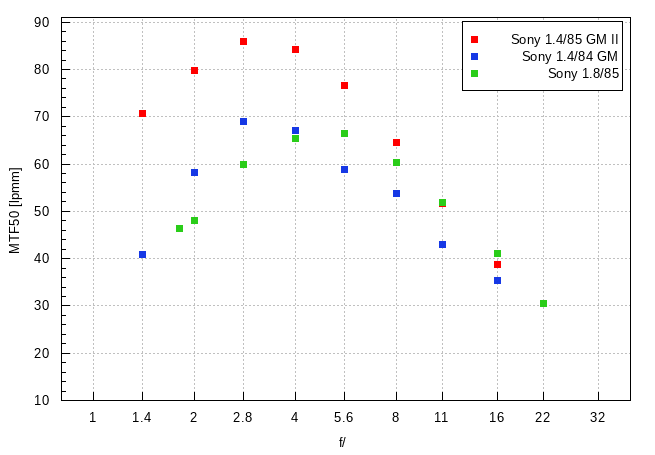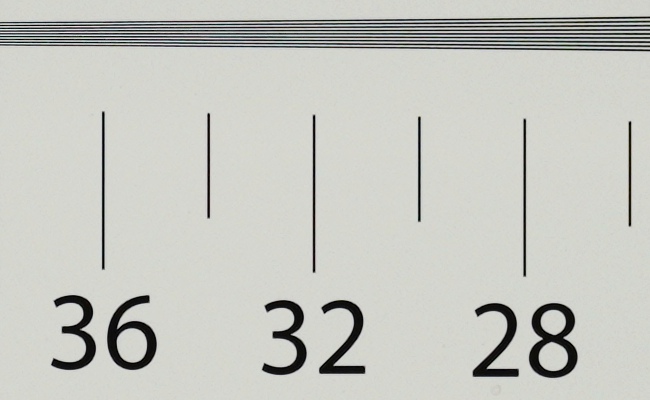Sony FE 85 mm f/1.4 GM II
4. Image resolution
Let's check how the Sony FE 85 mm f/1.4 GM II compares – its results in the frame centre, on edges of the APS-C sensor and full frame presents a graph below.

When it comes to the frame centre, it's enough to mention two things. First, at the maximum relative aperture the lens exceeds an outstanding level of 70 lpmm. Second, by f/2.8 we got a result of 85.8 +\- 1.5 lpmm, and it makes the Sony FE 85 mm f/1.4 GM II the second sharpest lens in the whole history of our tests on the 42.4 MPix Sony FE sensor.
Please Support UsIf you enjoy our reviews and articles, and you want us to continue our work please, support our website by donating through PayPal. The funds are going to be used for paying our editorial team, renting servers, and equipping our testing studio; only that way we will be able to continue providing you interesting content for free. |
- - - - - - - - - - - - - - - - - - - - - - - - - - - - - - - - - - - - - - - - - - - - - - - -
What's more, the graph shown below, with a comparison between the performance in the frame centre of the new Sony, its predecessor, and a much cheaper f/1.8 model, would be enough for commentary. You don't need to add anything to it.

I don't hesitate to use the term 'unbridgeable gap' here. How else would you describe a situation in which the new Sony FE 85 mm f/1.4 GM II is by f/1.4 sharper than the older system 85 mm devices at the peak of their performance so near f/2.8-5.6?
When it comes to the edge of the frame once again you can only rave about it. Both the edge of the APS-C sensor and the edge of full frame show excellent results, reaching 64-65 lpmm near the maximum relative aperture. What's more, on stopping down the aperture you are able to increase the MTFs value to a sensational level of over 75 lpmm on the edge of the smaller sensor and almost 69 lpmm on the edge of full frame.
A performance observed by f/1.4 and f/2.0 aperture is very interesting and worth mentioning here. The resolution on the edge of full frame is even slightly higher than on the edge of the APS-C sensor. It is connected to a specific performance of off-axis aberrations depending on the aperture value, especially the lateral chromatic aberration we are going to deal with in the next chapter. This effect, though, it just an interesting tidbit, not changing in any way our very positive assessment of outstanding results of the new Sony model in this category. Hats off, everyone!
At the end of this chapter traditionally we present crops taken from photos of our resolution testing chart, saved as JPEG files along the RAWs we used for the analysis above.
| A7R IIIa, JPEG, 85 mm, f/1.4 |
 |
| A7R IIIa, JPEG, 85 mm, f/2.8 |
 |






